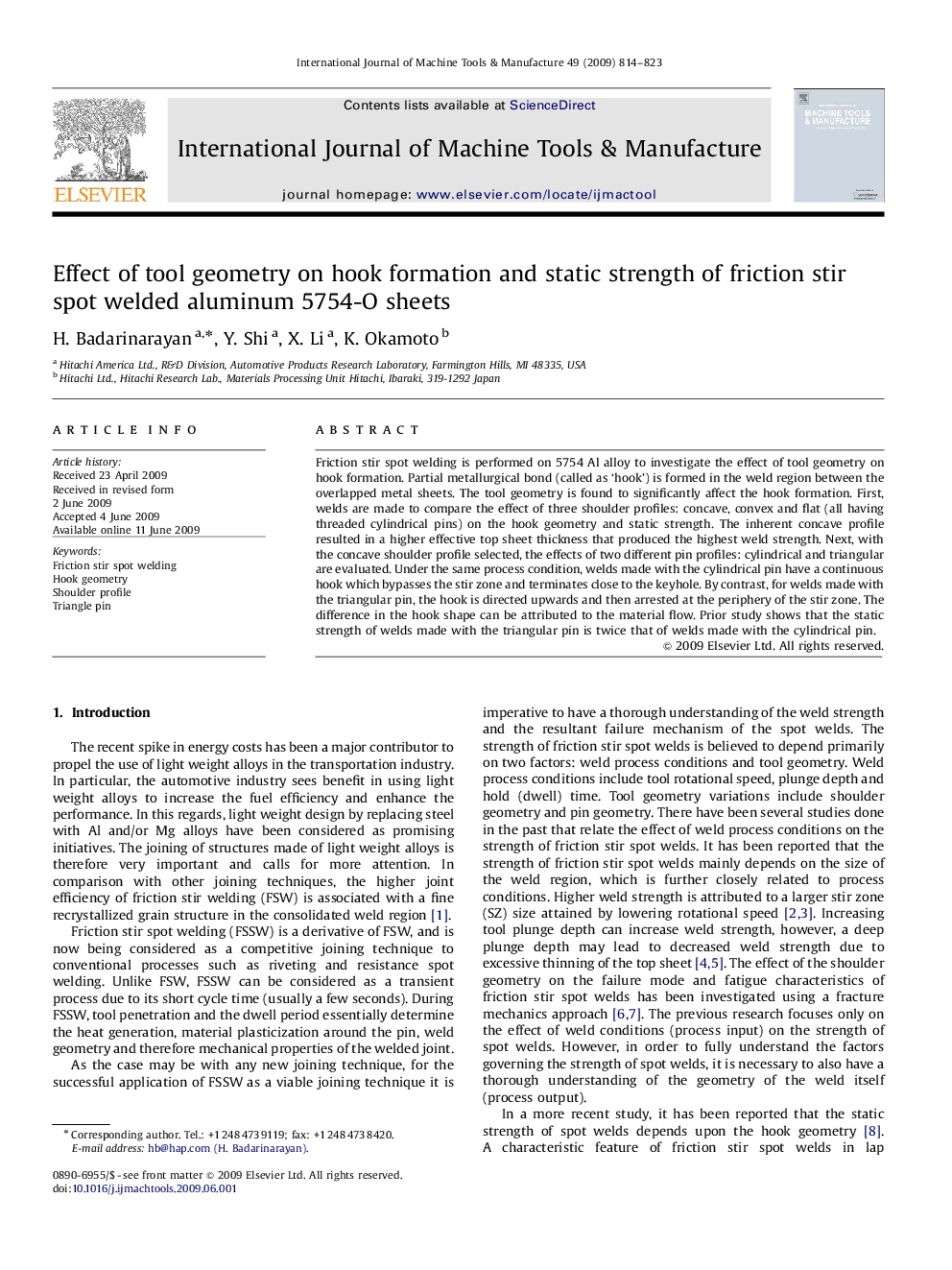| Article ID | Journal | Published Year | Pages | File Type |
|---|---|---|---|---|
| 781973 | International Journal of Machine Tools and Manufacture | 2009 | 10 Pages |
Friction stir spot welding is performed on 5754 Al alloy to investigate the effect of tool geometry on hook formation. Partial metallurgical bond (called as ‘hook’) is formed in the weld region between the overlapped metal sheets. The tool geometry is found to significantly affect the hook formation. First, welds are made to compare the effect of three shoulder profiles: concave, convex and flat (all having threaded cylindrical pins) on the hook geometry and static strength. The inherent concave profile resulted in a higher effective top sheet thickness that produced the highest weld strength. Next, with the concave shoulder profile selected, the effects of two different pin profiles: cylindrical and triangular are evaluated. Under the same process condition, welds made with the cylindrical pin have a continuous hook which bypasses the stir zone and terminates close to the keyhole. By contrast, for welds made with the triangular pin, the hook is directed upwards and then arrested at the periphery of the stir zone. The difference in the hook shape can be attributed to the material flow. Prior study shows that the static strength of welds made with the triangular pin is twice that of welds made with the cylindrical pin.
